The Need For Dedicated Local Transit
Downtown Los Angeles has undergone a major transformation during the last decade. Following the passage of the Adaptive Reuse Ordinance in 1999, a swell of ground-up and historic rehabilitation projects kicked off and gained momentum through the last decade. Downtown L.A. now has over 40,000 permanent residents and a daytime population of over 500,000, spread throughout several communities and neighborhoods. But this wave of revitalization unfortunately has not resulted in public transit options that can effectively circulate these residents and workers throughout the day and night. To fill this transportation void, a modern streetcar system is being proposed as the ideal medium to connect Downtown’s abundance of cultural and entertainment destinations, residential and office buildings, and future developments. Streetcars are major urban and economic development tools because they provide investors, developers, and potential renters/buyers assurance that their offices, properties, and projects will have permanent access to public transit. In addition, a streetcar system in Downtown L.A. will close the geographic and “travel distance” gap between the area’s neighborhoods. Currently it is simply too arduous to walk across Downtown from its edges, and parking multiple times throughout the course of a day can be expensive, cumbersome, and time consuming.
Streetcar Fundamentals
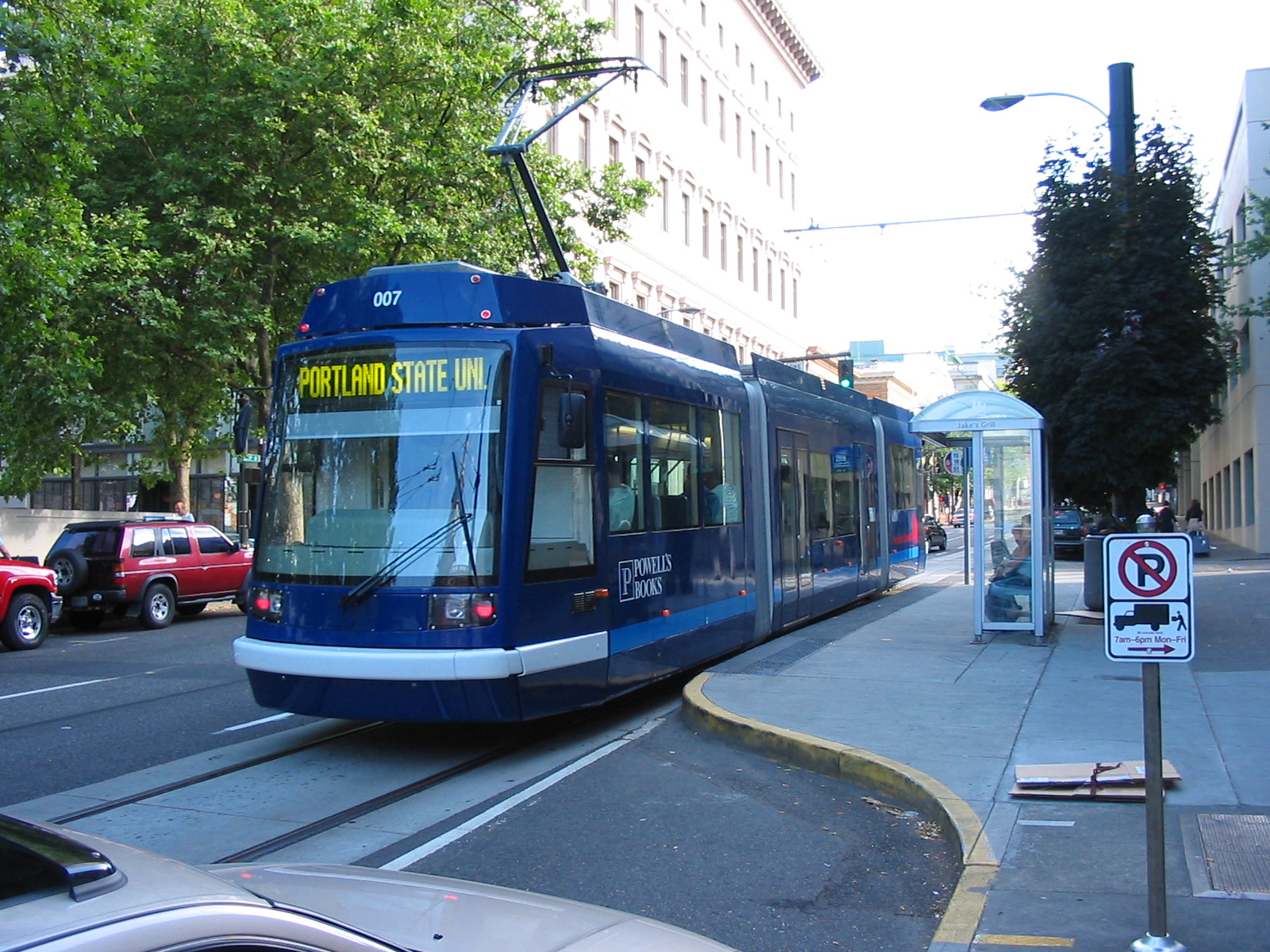 Larger than a bus, but smaller than a light-rail vehicle, streetcars run on fixed rails embedded in public streets, moving with the flow of traffic. They have proven to be serious economic development tools, spurring substantial investment and community development in numerous U.S. cities – such as Portland, OR, Seattle, WA, and Tampa, FL. Streetcar systems have proven to be economic development tools because they deliver pedestrian traffic that assures developers, investors, and cities that their projects will have high levels of street-front and ground floor activity – which are critical criteria for commercial and retail tenants. These investments are targeted to capture increased foot traffic sales, and take advantage of increases in location desirability and connectivity to transit networks. Modern streetcars are designed to integrate with existing urban environments and street corridors, and do not require dedicated rights-of-way.
Larger than a bus, but smaller than a light-rail vehicle, streetcars run on fixed rails embedded in public streets, moving with the flow of traffic. They have proven to be serious economic development tools, spurring substantial investment and community development in numerous U.S. cities – such as Portland, OR, Seattle, WA, and Tampa, FL. Streetcar systems have proven to be economic development tools because they deliver pedestrian traffic that assures developers, investors, and cities that their projects will have high levels of street-front and ground floor activity – which are critical criteria for commercial and retail tenants. These investments are targeted to capture increased foot traffic sales, and take advantage of increases in location desirability and connectivity to transit networks. Modern streetcars are designed to integrate with existing urban environments and street corridors, and do not require dedicated rights-of-way.
The “Last Mile” Solution
Downtown L.A.’s current transportation system does not provide the “last mile” of transit connections needed to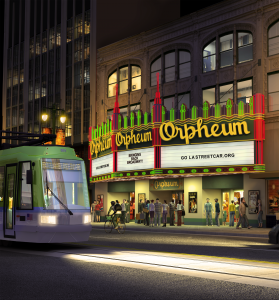 support and stimulate extensive pedestrian activity. Downtown has many transit options, but they do not provide efficient service between major destinations and transit networks and this has created a gap in that “last mile” of service. Transit challenges arise when people attend many events or venues and try to circulate between them. Despite Downtown’s compact size, it’s difficult to have dinner in South Park or at L.A. LIVE and
support and stimulate extensive pedestrian activity. Downtown has many transit options, but they do not provide efficient service between major destinations and transit networks and this has created a gap in that “last mile” of service. Transit challenges arise when people attend many events or venues and try to circulate between them. Despite Downtown’s compact size, it’s difficult to have dinner in South Park or at L.A. LIVE and 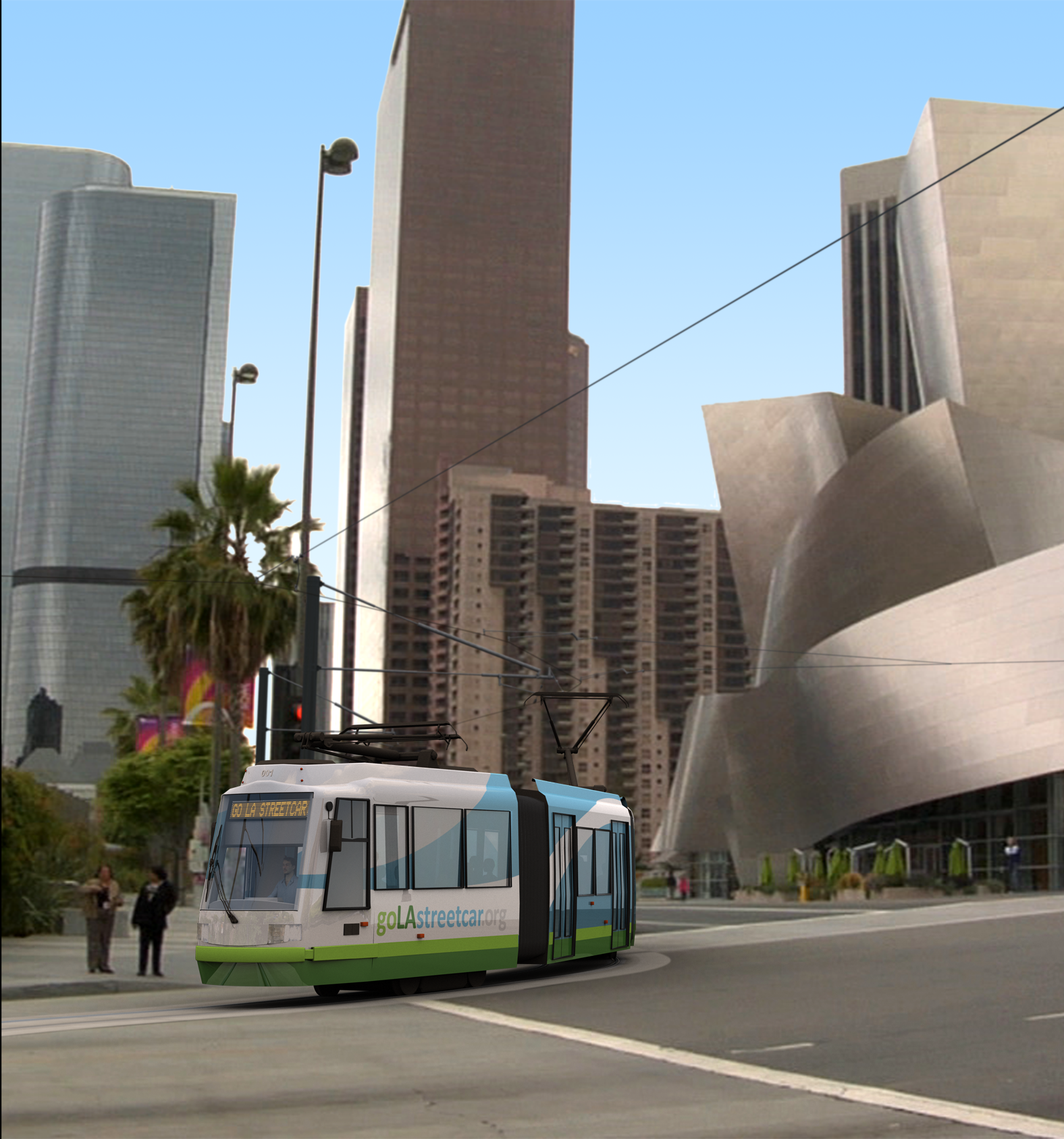 then attend a performance at the Walt Disney Concert Hall without driving or taking a taxi. More simple things, like buying groceries at Downtown’s only major grocery store, Ralph’s, and then getting them to a loft in the Historic Core is difficult to accomplish without an automobile. As a result, people continue to use their cars to get around Downtown L.A.
then attend a performance at the Walt Disney Concert Hall without driving or taking a taxi. More simple things, like buying groceries at Downtown’s only major grocery store, Ralph’s, and then getting them to a loft in the Historic Core is difficult to accomplish without an automobile. As a result, people continue to use their cars to get around Downtown L.A.
Connecting Downtown Los Angeles
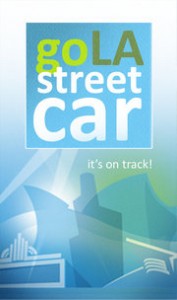 In 2009, Downtown Los Angeles property owners, businesses leaders, and civic stakeholders founded Los Angeles Streetcar, Inc., and the “goLAstreetcar” initiative with the shared vision of designing, planning and operating a modern streetcar system in Downtown Los Angeles. Los Angeles Streetcar, Inc., is modeled after the successful public/private partnerships that built modern streetcar systems in Portland, Oregon, and Seattle, Washington. This initiative has been generating steady support for the project, including embarking on a formal environmental review process. A strong argument in favor of a Downtown L.A. streetcar system is the area’s integration with existing and future regional transit connections. Over 100 bus lines, at least five existing and future rail connections, and a number of freeways all converge on the downtown area. Here are a couple of the proposed routes: Option #1, Option #2. And within downtown, the streetcar has the potential to increase urban circulation, connect neighborhoods, and make access to cultural,
In 2009, Downtown Los Angeles property owners, businesses leaders, and civic stakeholders founded Los Angeles Streetcar, Inc., and the “goLAstreetcar” initiative with the shared vision of designing, planning and operating a modern streetcar system in Downtown Los Angeles. Los Angeles Streetcar, Inc., is modeled after the successful public/private partnerships that built modern streetcar systems in Portland, Oregon, and Seattle, Washington. This initiative has been generating steady support for the project, including embarking on a formal environmental review process. A strong argument in favor of a Downtown L.A. streetcar system is the area’s integration with existing and future regional transit connections. Over 100 bus lines, at least five existing and future rail connections, and a number of freeways all converge on the downtown area. Here are a couple of the proposed routes: Option #1, Option #2. And within downtown, the streetcar has the potential to increase urban circulation, connect neighborhoods, and make access to cultural, 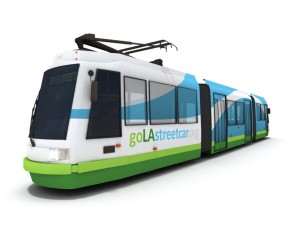 entertainment, and recreational sites much easier. Despite the preconception many may hold, modern streetcars are clean, quiet, and sustainable modes of transportation. They are powered by electricity, emit zero local-source emissions, and produce minimal noise during operation. Other cities that have implemented modern streetcar systems have experienced significant system-wide ridership increases, as streetcars increase the urban connectivity of regional transit networks.
entertainment, and recreational sites much easier. Despite the preconception many may hold, modern streetcars are clean, quiet, and sustainable modes of transportation. They are powered by electricity, emit zero local-source emissions, and produce minimal noise during operation. Other cities that have implemented modern streetcar systems have experienced significant system-wide ridership increases, as streetcars increase the urban connectivity of regional transit networks.
Planning For The Future
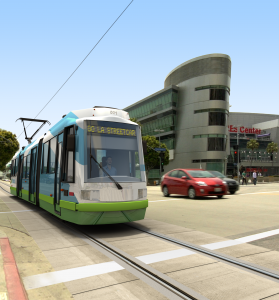 While the current economic climate presents many challenges for development projects, the streetcar can be seen as a catalyst to stimulate long-term investment and growth. Current cost projections estimate the system will cost $100-$125 million to build and between $4-$6 million annually to operate. Many community members and leaders believe the streetcar will be the critical element needed to foster a vibrant, walkable urban core. Construction of streetcar systems are not technically challenging, yet Downtown L.A. has an aging infrastructure of utility lines, roadways, pipes, and other underground-infrastructure that will require significant preparation. Other cities have faced this challenge by designing tracks to fit into shallow trenches (roughly 12 to 18 inches deep) that minimally disturb the ground and existing utilities. Design, engineering, and construction of modern streetcar systems typically take 2-3 years to complete. The big challenge is finding an effective balance of public/private dollars. With an estimated cost of $100-$125 million, a blend of public and private funding is being identified to find the best compromise and partnership between all stakeholders. Contributions from private partners cannot be so high that it no longer incentivizes their involvement, effectively stalling the progress of the project. The costs to property owners, tenants, and residents needs to be negotiated effectively to ensure the partnership can move ahead with the remaining funds coming from federal, state, and local sources. Federal funding for streetcar initiatives nationwide has dramatically increased with the change in administrations – over $154 million was allocated to streetcars via federal stimulus dollars (TIGER Grants), with another $125 million being made available through the Federal Transportation Agency’s Section 5309 Exempt Grant program. To compete for these and future funds, the Downtown L.A. streetcar project has formed partnerships with several L.A. City Departments, the Community Redevelopment Agency, METRO, State and Congressional representatives, and numerous civic and business organizations. With this level of support, the Downtown L.A. Streetcar Project is making progress to bring a streetcar system to Downtown within a few short years.
While the current economic climate presents many challenges for development projects, the streetcar can be seen as a catalyst to stimulate long-term investment and growth. Current cost projections estimate the system will cost $100-$125 million to build and between $4-$6 million annually to operate. Many community members and leaders believe the streetcar will be the critical element needed to foster a vibrant, walkable urban core. Construction of streetcar systems are not technically challenging, yet Downtown L.A. has an aging infrastructure of utility lines, roadways, pipes, and other underground-infrastructure that will require significant preparation. Other cities have faced this challenge by designing tracks to fit into shallow trenches (roughly 12 to 18 inches deep) that minimally disturb the ground and existing utilities. Design, engineering, and construction of modern streetcar systems typically take 2-3 years to complete. The big challenge is finding an effective balance of public/private dollars. With an estimated cost of $100-$125 million, a blend of public and private funding is being identified to find the best compromise and partnership between all stakeholders. Contributions from private partners cannot be so high that it no longer incentivizes their involvement, effectively stalling the progress of the project. The costs to property owners, tenants, and residents needs to be negotiated effectively to ensure the partnership can move ahead with the remaining funds coming from federal, state, and local sources. Federal funding for streetcar initiatives nationwide has dramatically increased with the change in administrations – over $154 million was allocated to streetcars via federal stimulus dollars (TIGER Grants), with another $125 million being made available through the Federal Transportation Agency’s Section 5309 Exempt Grant program. To compete for these and future funds, the Downtown L.A. streetcar project has formed partnerships with several L.A. City Departments, the Community Redevelopment Agency, METRO, State and Congressional representatives, and numerous civic and business organizations. With this level of support, the Downtown L.A. Streetcar Project is making progress to bring a streetcar system to Downtown within a few short years.
For more information, please visit www.streetcar.la.
Eric Metz is an Associate at Urban One (www.urbanone.com), a Development and Project Management firm, that is managing the streetcar initiative.
